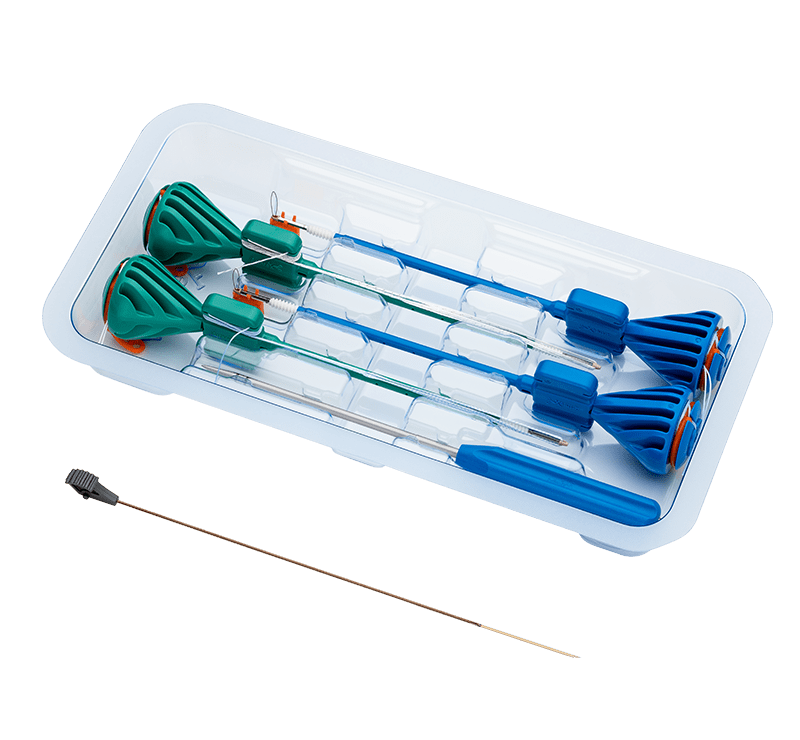Educational Resources and Products
SpeedBridge™ Repair With Knotless Medial Pulley
Compression SpeedBridge™ Rotator Cuff Repair
Cowboy Way Advanced Shoulder Arthroscopy: Double-Row Repair—Why and How?
SpeedBridge™ Rotator Cuff Repair With Medial Ripstop Sutures and Knotless SwiveLock® Anchor
Expansion SpeedBridge™ Repair for Massive Rotator Cuff Tear
SpeedBridge™ Knotless Rotator Cuff Repair
Videos
Documents
Languages
Surgical Technique Videos (12)
SpeedBridge™ Rotator Cuff Repair With Knotless SwiveLock® Anchors and AlloSync™ Buttons
SpeedBridge™ Rotator Cuff Repair With Medial Ripstop Sutures and Knotless SwiveLock® Anchor
SpeedBridge™ Rotator Cuff Repair Using Tensionable Knotless SwiveLock® Anchors
SpeedBridge™ Repair With Knotless Medial Pulley
SpeedBridge™ Canopy Augmentation Technique With ArthroFLEX® Dermal Allograft
Bursal Acromial Reconstruction for Irreparable Rotator Cuff Tears
Infraspinatus Tear With Reverse HAGL
Expanded SpeedBridge™ for Massive Revision Rotator Cuff Tear Augmented with ArthroFlex® Acellular Dermal Extracellular Matrix
SpeedBridge™ Rotator Cuff Repair Using the SpeedBridge™ Implant System
SpeedBridge™ Rotator Cuff Repair Cadaveric Demonstration
SpeedBridge™ Rotator Cuff Repair Augmented with ArthroFlex® Decellularized Dermis
BioBridge® Rotator Cuff Repair Augmented with DX Reinforcement Matrix
Surgical Technique Animations (1)
SpeedBridge™ Repair
Surgical Technique Guides (4)
SpeedBridge™ Knotless Rotator Cuff Repair
SpeedBridge™ and SpeedFix™ Knotless Rotator Cuff Repair Using the SwiveLock® C Anchor and FiberTape® Suture
Massive Rotator Cuff Repair and Augmentation using the SpeedBridge™ and ArthroFlex® Dermal Matrix
ArthroFlex® BioWasher™ for use with SpeedBridge™ Knotless Rotator Cuff Repairs
Brochures (1)
New Product Spotlight - Shoulder Innovations | 2024
Case Presentation Videos (2)
Expansion SpeedBridge™ Repair for Massive Rotator Cuff Tear
Strength and Reliability of the SpeedBridge™ Repair
Catalogs (1)
Shoulder and Elbow - Next Generation in Repair and Reconstruction 2024
Coding Guides (1)
SpeedBridge™ Technique 2025 Coding and Reimbursement Guidelines
Patient Education Animations (1)
Rotator Cuff Repair with SpeedBridge™ Technique
Presentation Videos (12)
Augmented Rotator Cuff Repair Using the GraftNet™ Autologous Tissue Collector
Cowboy Way Advanced Shoulder Arthroscopy: Double-Row Repair—Why and How?
Long-Term Outcomes With Knotless, Double-Row Rotator Cuff Repair
New Techniques in Arthroscopic Subscapularis Repair
Biomechanics of Single-Row vs Double-Row Rotator Cuff Repair
Revision Rotator Cuff Repair Principles and Mobilization Techniques
Identifying and Managing Subscapularis Tears
SpeedBridge™ Knotless Double Row Rotator Cuff Repair
Double Row Rotator Cuff Repair
Knot Tying Studies
Rotator Cuff Allograft: Augmentation and Bridging Technique
Product Demonstrations (1)
Single Row vs SpeedBridge™ Rotator Cuff Repair: The PASTA Effect
Surgeon Newsletters (1)
Scope This Out - Volume 22, Number 1
White Papers (1)
Arthrex® Bio and Biocomposite Implants: Post-op Complaint Analysis by Product Family
AR-2600SBS-8
4.75 mm BioComposite SpeedBridge Implant System w/SCORPION-Multifire Needle Includes two 4.75 mm BioComposite SwiveLock C Anchors w/one Preloaded FiberTape Loop (1 Blue, 1 White/Black) for Medial Row, two 4.75 BioComposite SwiveLock Anchors for Lateral Row, Disposable Punch, and SCORPION-Multifire Needle
AR-2600SBS-9
4.75/5.5 mm BioComposite SpeedBridge Implant System w/Scorpion Needle Includes two 4.75 mm BioComposite SwiveLock C anchors w/ one preloaded FiberTape Loop (1 Blue, 1 White/Black) for medial row, two 5.5 mm BioComposite SwiveLock C anchors for lateral row, disposable punch, and SCORPION-multifire needle.
AR-2600SBS-5
4.75/5.5 mm BioComposite SpeedBridge Implant System SP (self-punching) Includes two 4.75 mm BioComposite SwiveLock C anchors w/ one preloaded FiberTape Loop (1 blue, 1 white/black) for medial row, two 5.5 mm BioComposite SwiveLock SP (self-punching) anchors for lateral row, and disposable punch
